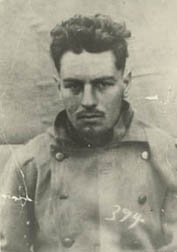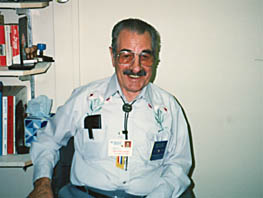
 |
| NIIGATA, JAPAN 1943 |
 |
| ME 12/95 |
| Last Name: ` PELKEY |
First Name
Middle Initial: RAYMOND A |
Nick Name: |
|
| Street: 24 BONNIE HEIGHTS DR | City & State: HUDSON, NH | E-Mail: NONE | |
| Zip: 03051 | Phone: | Spouse: DECEASED | |
| Conflict: WWII | Service Branch: Army Air Corp | Unit: HQ SQ 20ABG | |
| Theater: Pacific | Where Captured: HOSPITAL #1, BATAAN P.I. | Date Captured: 04/09/42 | |
| Camps Held In: CAMP #1 CABANATUAN P.I., CAMP 5-B NIIGATA JAPAN | How Long Interned: 1245 days | ||
| liberated / repatriated: liberated | Date Liberated: 09/05/45 | Age at Capture: 19 | |
| Medals Received: BRONZE STAR MEDAL WITH ONE OAK LEAF CLUSTER, PURPLE HEART, POW MEDAL, GOOD CONDUCT MEDAL WITH TWO KNOTS, AMERICAN DEFENSE SERVICE MEDAL WITH ONE BRONZE STAR, AMERICAN CAMPAIGN MEDAL - WORLD WAR II, ASIATIC/PACIFIC CAMPAIGN MEDAL WITH TWO OAK LEAF CLUSTERS, WORLD WAR II VICTORY MEDAL, PHILIPPINE DEFENSE MEDAL WITH THREE STARS, PHILIPPINE INDEPENDENCE MEDAL, U.S. PRESIDENTIAL UNIT CITATION, COMBAT INFANTRYMANS BADGE, CHINA WAR MEMORIAL MEDAL | |||
| Military Job: CLERK B.A.R RIFLEMAN | Company: HUDSON POST 48 AMERICAN LEGION | ||
| Occupation after War: ROUTE SALES AND BAR MANAGER | |||
| Military Bio: My captivity after the surrendered of Bataan Philippine Islands on April 9, 1942; At the surrender I was in the hospital #1 on Bataan recovering from a machine gun wound I received while on reconnaissance patrol. My wound occurred eleven days before the surrender. After a short period of time the hospital patients at Hospital #1 were sent to the Old Bilibid Prison in Manila which had been made into a makeshift hospital. After recuperating from my wound at Bilibid I was sent to Camp #1 at Cabanatuan in the Philippine Islands where I slaved on the prison farm detail, the canal digging detail, and the digging of a Carabao Wallow. A Carabao is an Asian water buffalo. The Carabao was a source of meat for the guards, nada for the POW's. In September of 1942 I and 349 other POW's were shipped like cattle in a Hell Ship to Niigata, Japan for more slave labor. In Camp 5-b in Niigata, I slaved in the Rinko Coal Yards. Coal was shipped from Manchuria, China to Niigata. The coal was unloaded from the ship to barges, from the barge the coal was elevated by a conveyer machine to a 30 foot high railroad trestle, where V-shaped cars holding about one half ton of coal would be filled from the conveyer machine and then pushed around the track by a POW to a storage site or to railroad cars under the trestle, then dumped. Once dumped the empty elevated car would circle the track for another load. This went on in spite of rain, snow, high winds, or burning sun for 12 hours a day 7 days a week with only a very short break at mid-day for our rice and watery soup banquet. Our guards were the group at Camp 5-b as on the Rinko detail. These guards were all discharged and disabled military whose methods of discipline towards POWs were measured out in proportion to the seriousness of their disabilities-caused by our military and the disciplinary procedures they experienced in the Japanese military - which was brutal. Food: Our food rations added up to a caloric in-take of barely enough to sustain life. Breakfast was called Lugao. Lugao is rice cooked in water to a constancy of oatmeal. Mid-day and evening meals were steamed rice and watery soup. One bucket of water and one Dikon - a Japanese radish seemed the recipe for POW soup. Medical: In Camp 5-B we had no doctor until October of 1943. With no medications the doctor's only medicine was admitting as many POWs daily as our captors would allow to the doctor's tiny one room hospital for a threes day rest. This saved many lives. |
| My Message to Future Generations: Do I hate the Japanese? How can I hate a whole race because of a few misguided and mislead few? To quote confucius: A man came to me with hostility and I let him keep his gift. |
To Edit Bio Click Here
Return to CombatVets.net Home Page
This Site Published CombatVets Network, Division of LovedOnes
Inc. (727) 588-0747